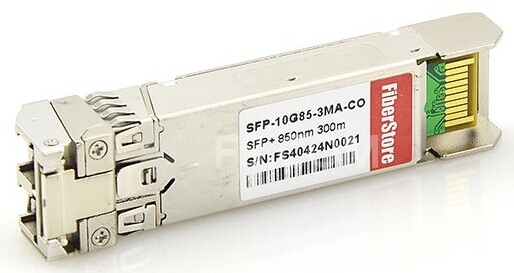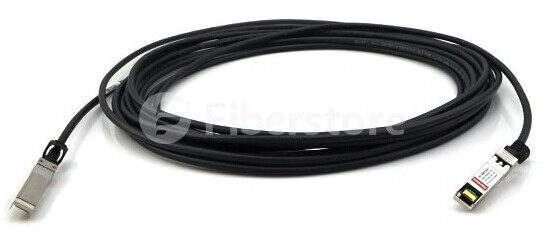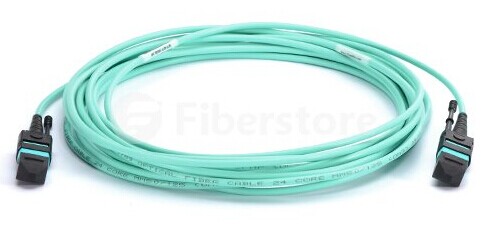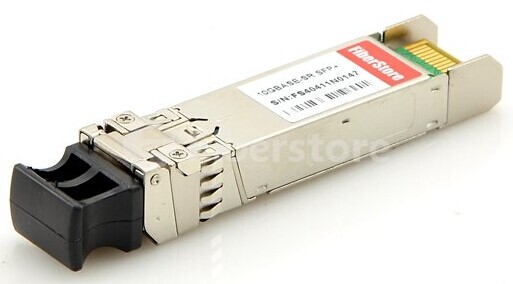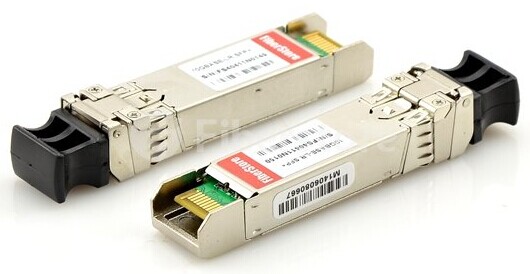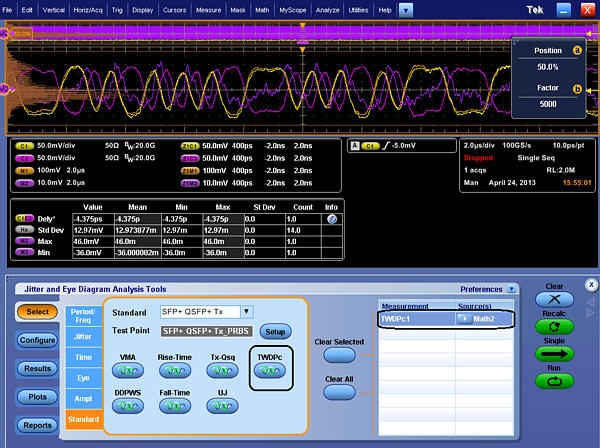With the wide deployment of 40 Gigabit Ethernet , many companies are upgrading data center from 10G to 40G. In order to realize the migration, there are several factors that need to be considered. First, the potential for a reconfiguration of the physical layer of the network based on the reduced reach of the OM3/OM4 multimode optics from 10GBASE-SR (300/400 m) to 40GBASE-SR4 (100/150 m). Second, the existing fiber optic cabling should be upgraded based on the additional fiber count needed to support 40GBASE-SR4 parallel optics. So manufacturers produce SMF&MMF 40G QSFP+ transceiver.
Generally speaking, a fiber optic transceiver may either operate on multimode fiber (MMF) or single-mode fiber (SMF). However, a SMF&MMF 40G QSFP+ transceiver can be used with both MMF and SMF without the need for any software/hardware changes to the transceiver module or any additional hardware in the network. This transceiver operates in the 1310nm band and can support transmission distance up to 150 m over OM3 or OM4 multimode fiber and up to 500 m over single-mode fiber (different vendor may have different specifications). This can be achieved by combining 150 m over OM3 or OM4 multimode fiber and up to 500 m over single-mode fiber (different vendor may have different specifications) inside the transceiver module over a single pair of multimode or single-mode fibers. Now there are two main SMF&MMF 40G QSFP+ transceiver in the market: Arista QSFP-40G-UNIV and Juniper JNP-QSFP-40G-LX4. They are used for upgrading from 10G to 40G networks over MMF and SMF without modification or expansion.
The increasing needs for bandwidth drives data center migrating to 40G. Optical equipment connecting switches are needed. SMF&MMF 40G QSFP+ transceiver is designed to allow for seamless migrations from existing 10 to 40GbE networking without requiring a redesign or expansion of the fiber network. Besides, this transceiver also provides a cost-effective solution to migrate from multimode to single-mode fiber, which can support the distance up to 500 m with the single-mode fiber infrastructure. The following will talk about its advantages in detail.
- Zero-cost Cabling Migration Existing 40G transceivers for short reach, uses four independent 10G transmitters and receivers for an aggregate 40G link, which use an MPO-12 connector and require 8-fiber parallel multimode fiber (OM3 or OM4). But a SMF&MMF QSFP+ allows the same cables to be used for direct 10G connections to direct 40G connections, resulting in zero-cost cabling migration. Because it uses duplex LC connector consistent with the existing 10G connections, which commonly utilize MMF cables with duplex LC connectors.
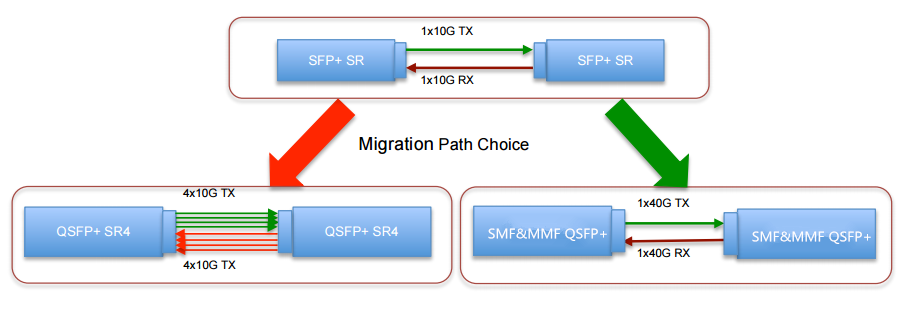
- Increase Number of 40G Links Existing MMF 40G solutions use 8 fibers for a 40G link. Network designers have to add additional fiber to increase the number of 40G links. With SMF&MMF 40G QSFP+ transceiver, there is no need to change fiber infrastructure. It only needs to increase the number of 40G links by 4 times to expand network scale and performance.
- Migrate from Multimode to Single-mode Fiber For the future upgrading from 40G to 100G and beyond to 400G, there is a strong desire for data centers to move to single-mode fiber for cost effectiveness. Because multimode transceivers have limitations of supporting distances with ever increasing data rates, while single mode transceivers, such as the JNP-QSFP-40G-LR4 QSFP+ transceiver can support max distance of 10 km over single mode fiber cables. However, the single-mode transceivers typically cost up to 4 times more compared to multimode transceivers. As SMF&MMF QSFP+ interoperates with 10km QSFP-LR4 optics, it s a cost effective solution for SM fiber infrastructure for distances up to 500 m.
- Simplify the Data Centers The SMF&MMF 40G QSFP+ transceiver operates on both multimode and single-mode fiber without any requirement for additional hardware or software. Network designers can use SMF&MMF QSFP+ irrespective of the fiber type, which takes full advantage of the existing cabling systems, reducing the cost of deployment and of support, and simplify purchasing and deployments.
The utilization of SMF&MMF QSFP+ transceiver can help migrate from 10G to 40G without teh need to redesign or change the cable infrastructure. Besides, it can save cost and expand the infrastructure with low capital investment. It also offers a migration to single-mode fiber in data centers with a single transceiver that bridges the gap between multi-mode and single-mode optics. Fiberstore provides cost-effective SMF&MMF 40G QSFP+ transceiver for migrating to next-generation 40G data center deployments. Besides, single mode transceivers (like 40GBASE-LR4 QSFP+) and multi-mode transceivers (like Cisco QSFP-40G-CSR4) are also available for your choice.










